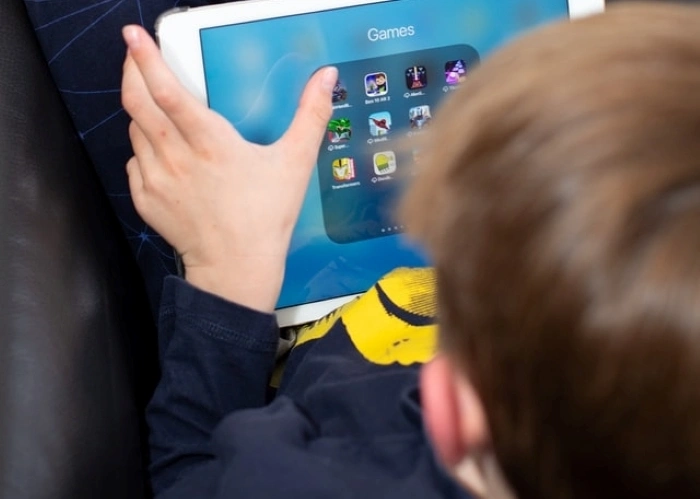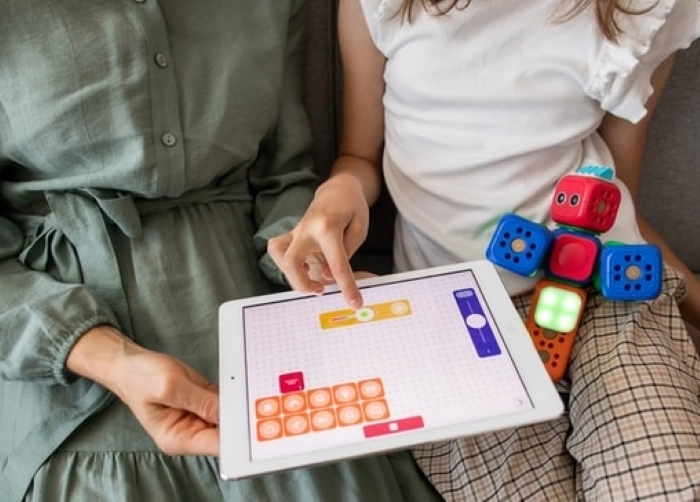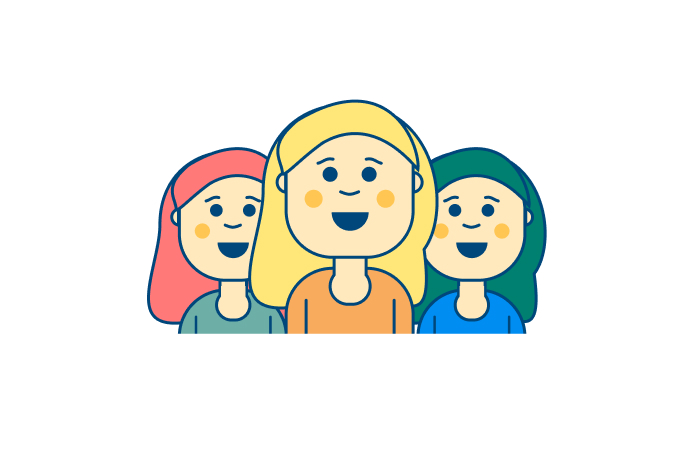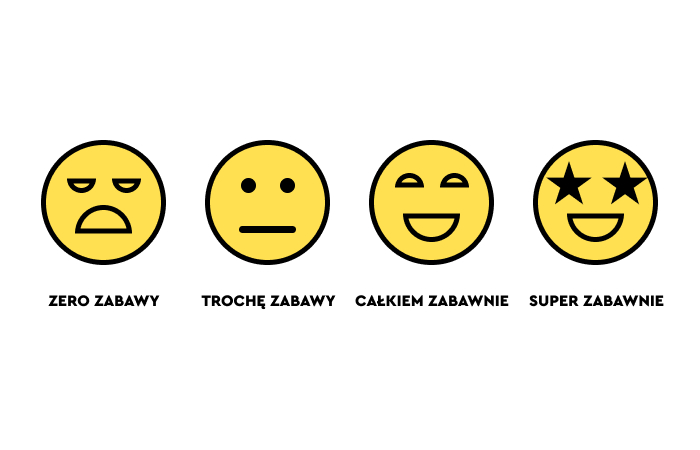We have already written about how to design applications for children, so today, we will address a different problem.
We will try to answer the questions: How to conduct UX Research with minors? How to conduct Usability Testing with children?
While highlighting the primary concern of this article, let's note right away that the category of minors, children (as a target group), is ambiguous, to say the least.
It is broad enough to include people who linguistically belong to the same category (e.g., children).
However, in terms of emotional, cognitive, motor, and social development, a six-year-old and a twelve-year-old are divided by a huge gap.
Six, twelve, and seventeen-year-olds have vastly different needs, goals, abilities (manual, cognitive), competencies, ways of communication, and behaviors.
The differences between minors at such different ages and stages of development are pretty obvious, and it isn't necessary to refer to sophisticated theories of human development to see them and consider them significant.
With that said, UX researchers should be more aware of these differences. They must make them a crucial variable in designing research on a digital product's usability.
Age and capabilities, limitations, and needs associated with it not only influence and determine the way of design thinking but also affect the choice of research methods and the course of UX research.
How should we conduct UX/Usability Testing with children? How to recruit minors for research?
What are the challenges of UX Research conducted with minors? Is it worth researching minors at all, and what ethical issues surround this type of research?
How does Usability Testing with children, minors differ from Usability Testing with adults?
We cordially invite you to find answers to the above questions in our article!
Usability Testing with children
Let's start with a very general yet universal remark.
Usability testing with minors has many challenges and problems, among which the most significant are the following:
- methodological
- ethical
- legal
- organizational and logistic
- communicational and linguistic.
First of all, it is essential to remember that the research method should be adapted to the age and capabilities of children.

We should remember that usability tests with children require above-standard consent from parents or legal guardians and their presence during the test.
UX research with children requires compliance with much stricter standards of conduct. When studying children's reactions (e.g., spontaneous comments) to digital products, we need to be much more sensitive, empathetic, open, flexible, and understanding.
Moreover, the issue of the study's impact (short- and long-term) on minors' well-being (mental and emotional) cannot be overlooked.
Usability research must be extensive and guarantee maximum safety and comfort for children, their parents, and caregivers.
That's why it's worth keeping in mind the recommendations presented in the article "Testing by Minors: Risk Prevention for UX Pros" – it's a kind of checklist that every interactive, UX agency should be aware of.
Elizabeth Brown, the author of the article, urges UX researchers to:
- Always provide parents, legal guardians of minors with full and clear information on the procedure, objectives, and how the research results will be used.
- Ensure that parents and caregivers understand the course, purpose, and method of the research and that their consent is fully informed.
- Guarantee that research in a methodological and ethical sense meets all standards of safety and ethics.
The study of children and digital products dedicated to them requires proper planning of the time, preparation of the study site, and excellent organizational efficiency. The way of formulating questions is also important.
We should adapt the language we use before, during, and after the study (questions) to match children's cognitive abilities and linguistic competence.
Yes, UX research with children is demanding and challenging.
But at the same time, it is useful and necessary if business owners strategically treat the application's development and competitiveness.
In UX research with children, we also need to be aware of issues of a general and specific nature.
In a general sense, as a category, children are characterized – especially compared to mature adults – by a much greater:
- honesty
- directness
- spontaneity
- originality of responses
- insight.
At the same time, they are much more:
- distracted
- receptive to new things
- expecting attractive, exciting stimuli (e.g., in the form of a question)
- incapable of performing long tasks, especially if they don't involve emotions, don't have a ludic character (allowing them to have fun)
- unpredictable, unstable (prone to change).
Children (the younger they are, the following traits intensify) become much more easily and quickly:
- frustrated
- bored
- overstimulated
- disinterested, disengaged.
In a specific sense, the characteristics mentioned above will come into play (individually and as a specific constellation of characteristics) depending on:
- child's age
- development stage (we wrote about Jean Piaget's influential theory of child development in the article linked in the introduction of this text)
- specifics of personal development (ontogeny).
We should possess the appropriate knowledge, competence, predisposition, and experience to deal with these issues.
We can find more detailed and problem-oriented guidelines for conducting usability testing with children in the article "MRS Guidelines for Research with Children and Young People."

Before conducting research with minors, it's also a good idea to read the MRS Code of Conduct, which is published on the website of The Market Research Society. The goal of this UK-based organization is, among other things, to set the best standards for conducting research.
The standards that researchers should meet in the course of research with children outlined in the Code of Conduct certainly benefit not only the respondents but also the researchers, who, thanks to them, can obtain research results characterized by high reliability, credibility, and usefulness.
The specifics of Usability Testing with children
Children are a specific category of respondents, which is additionally highly internally differentiated.
The two, three, or four years of age gap doesn’t make much difference in the case of adults.
They are almost the same users of digital products, similarly approaching online services and handling tasks in the same way.
However, the situation is entirely different when we ask a six-year-old and a thirteen-year-old child to perform the same task.
In the case of children, differences of several years can raise significant research and methodological implications regarding the project as well.
That's why standard methodological approaches are inadequate, inadvisable, and sometimes simply harmful or risky.
Adult and minor users can perform different tasks on a website and exhibit completely different behaviors.
Usability testing with children has its own rules related to children's capabilities and limitations, safety, reliability of the results obtained, and their representativeness and usefulness in design, research, and business sense.
One of the crucial issues that stem from the stages of development of children is the appropriate segmentation of the respondents, which should be based on objective and scientific reasons.

The classic theories of child and adolescent development formulated by Jean Piaget and Erik Erikson are good guidelines.
As shown by various concepts of biological, intellectual, motor, social, emotional, and even moral development, children have a different range of capabilities at different stages of life.
We should include in our UX research the following capabilities:
- intellectual
- manual (which is extremely important in the context of, for example, usability testing of mobile apps).
As Alita Joyce notes in her article "Usability Testing with Minors: 16 Tips," which was published on Nielsen Norman Group's blog, when designing for children, when testing children, the main thing to keep in mind is the cognitive and motor issues of the young customer.
With age, changing social environment, and the experiences of a young client, the complexity of the capabilities and interests of children increases. Hence the research should be designed and carried out in accordance with these conditions.
Moreover, we also need to ensure:
- The child's subjectivity – we should mask the disproportion between the adult researcher and the child.
- That the test's purpose is attractively explained to children – we should tailor it to the cognitive abilities and emotional needs of children of a certain age.
- The proper conduct of the research, in which the child's comfort and the naturalness of the situation, should be the primary goal.
- The method of communication that should encourage children doesn't suggest them anything – parents, legal guardians, or researchers shouldn't help children answer questions.
- That the tools used in the testing are adapted to the development stage (for example, an iconographic rating scale in the form of emoticons will be ideal for children under the age of 10 and far too infantile for older children).
- The appropriate time of day – the starting time and the test length should be adapted to the daily rhythm of children.
- The right time – usability testing shouldn't interfere with the rhythm of school activities and shouldn't be conducted at a time of higher stress levels (for example, before the end of the school year).
- The appropriate length of testing – as a rule, the younger the child, the shorter the testing time should be.
A useful tip for segmenting teenage respondents is to divide them by stage in the education process.

Children in kindergarten, elementary school, and high school have different characteristics. They are entirely different respondents, and identifying their common traits is really difficult. Digital products designed for them also differ significantly.
For example, children in:
- Kindergarten – are unable to perform formalized tasks and require a more open, spontaneous approach, in which observation of natural interactions is more important than observation of actions imposed by the researcher's instructions.
- Elementary school – should be asked to perform simple and sequenced tasks based on clear and single instructions.
- High school – are eager to perform more complex tasks. We should balance the level of simplicity and complexity. The tasks shouldn't be too simple or too complicated.
At the same time, it is essential to remember that there are large differences within these general groups.
A much better solution, which we will discuss in a moment, is a more precise division according to age criterion. The established age ranges help to define concrete groups of respondents.
When preparing a plan for UX research with minors, we need to be:
- flexible
- creative
- imaginative
- empathetic
- understanding.
It's important to remember that responses (primarily verbal) become more relevant, more useful in terms of research conclusions, and more intentional with the increasing age of users, small customers.
The younger the child is, the more we should pay attention to their non-verbal reactions.
The UX researcher should pay attention to:
- facial reactions
- body reactions – such as poses, activity (e.g., fidgeting)
- vocal responses (e.g., squeaks, sighs).
Best practices in Usability Testing with minors
Legal, ethical, organizational, and logistical issues are significant in usability testing with children.
We must conduct research (e.g., tests with minor Internet users) with particular attention to these issues.

This applies to the questions and the time, place, and manner in which the study of users will be conducted.
The study's success largely depends on how the UX research team will handle the recruitment, comfort, and safety of children, parents, and caregivers.
Sessions should be structured and clearly divided into the following time frames:
- Preparation of a small respondent for a given part of a study (e.g., a particular task, test, formulation of first questions)
- Playtime – interaction with a digital product
- Rest time – a break during which other needs of the child are met (e.g., physiological, emotional, or contact with the parent or guardian)
- Game time – activities that diversify the course of the session.
Very useful guidelines are provided in this regard by the article "Usability Testing with Kids and Teens," which lists the most important tips for conducting research with minors.
It is very important to:
- Use age-appropriate language. With younger children, we should avoid language that infantilizes the researcher or the respondent, but it needs to be as simple as possible.
- Segment respondents using a quantitative age criterion (e.g., a range of 6 to 9 years), not a qualitative age criterion (e.g., teenagers).
- Reserve a longer testing time for younger children, whose reactions (including emotional ones) are much more unpredictable.
- Recruit a larger number of respondents – in the case of children, there is a greater risk that the respondent and their parent or guardian won't be able to appear at the test site on a given day at a given time.
- Adjust the rating scale to the child's cognitive abilities; diversifying them is also essential.
When conducting usability testing with children, it is also important to remember that the testing will occur in the presence of parents or guardians.
Parents and caregivers are an essential element to consider as an organizational variable affecting the credibility, reliability, and methodological compliance of the research.
When writing about the recruitment prerequisites (related to the conduct of the study) of minors for User Experience research (testing, for example, a website aimed at children), we can't forget about the very accurate remarks made by Alita Joyce in the article cited above.
She says that it's important to remember about:
- The rule that 1 out of 9 respondents doesn't show up for the study. In the case of research with minors, the problem intensifies, as the reason for the absence may be an emergency affecting both the child and the parent or guardian.
- Reserving a longer time slot for the entire study session, as well as each individual study.
- Accurately grouping respondents.
- Appropriately attractive incentives such as financial bonuses, non-cash benefits, and gifts offered to both children and adults.
- Being empathetic, sensitive, patient, flexible, and open – the moderators of usability tests with children need to have these traits.
- Adapting the laboratory to the emotional needs of the child – the space should be friendly and guarantee, strengthen the sense of security, and feature aesthetics preferred by children.
- Planning, logistics, and ensuring the smoothness of the study – in practice, this means involving a more numerous research team that can streamline the research session.
- The principle of process simplification – both in the organizational and substantive sense- refers to the course of the study.
- The ludic aspect of the study – it should be interesting, engaging, and filled with activities oriented towards fun, free exploration of a website.
How to conduct Usability Testing with minors? Summary
- Minors, younger children are an ambiguous category and internally strongly differentiated in terms of needs, capabilities, limitations, and experiences.
- A small age difference causes children to significantly differ from each other in the aspects of emotional, cognitive, motor, and social development. They have very different experiences in these dimensions.
- A five-year-old and a twelve-year-old have more differences than common traits.
- Age is a variable that strongly determines the choice of research methods and the course of UX research.
- Usability testing with minors has a number of challenges and problems.
- Among the most important issues are methodological, ethical, legal, organizational, logistical, communicational, and linguistic problems.
- When studying children's reactions to digital products (e.g., how a child interacts with a website), we should be much more sensitive, empathetic, open, flexible, and understanding.
- The study of children requires proper planning of the time, preparation of the study site, and excellent organizational efficiency.
- We should adapt the language (including materials) that researchers use during usability testing to the cognitive abilities and linguistic competence of the respondents.
- Usability testing has laws related to children's capabilities and limitations, safety, reliability of the results obtained, and their representativeness and usefulness in design, research, and business sense.
- The researcher's experience, competence, and predispositions play a crucial role.
- Research sessions, usability tests with children should be structured and divided into playtime, rest time, and activities that diversify the course of the research in the laboratory.




